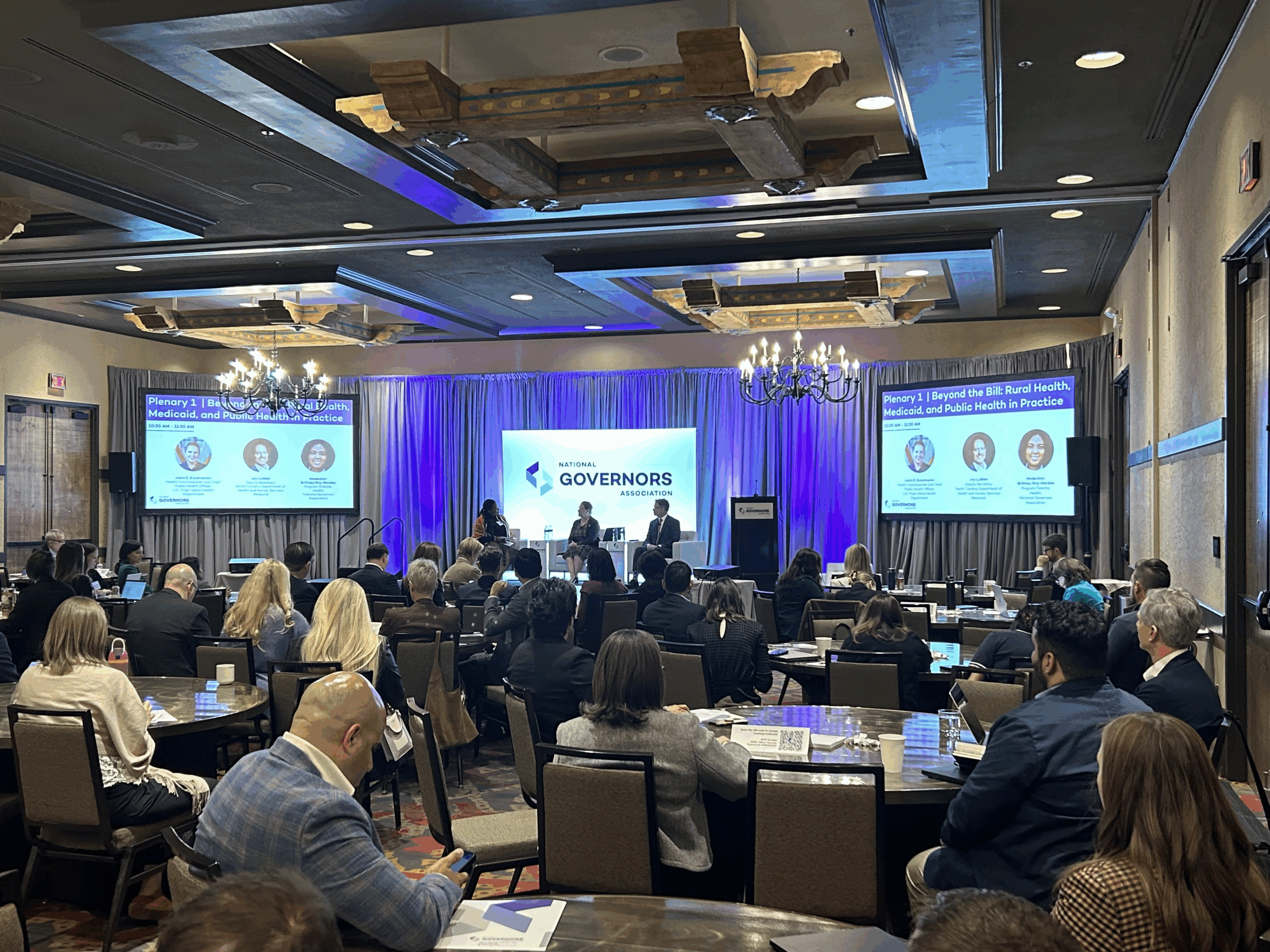“State Strategies for Scaling Work-Based Learning: Lessons Learned from an NGA Policy Academy” provides greater detail on how governors can lead and work with state partners on each key element of systems change. The guide draws on examples and lessons learned from work with the 19 states and territories that have participated in the NGA Center Policy Academy on Scaling Work-Based Learning to date.
Executive Summary
Broad economic disruption is changing work, workers and workplaces at an accelerated pace. These disruptive forces include technological advancement, artificial intelligence, globalization and labor force demographics, all of which contribute to the changing nature of work and the types of work that may be available in the near future. Governors and other state leaders recognize that their residents must be better prepared to keep pace with and adapt to change and new technological disruptions throughout their careers. In this climate of disruption, these leaders are pursuing strategies to identify and scale high-quality education and training programs to prepare their residents for good jobs. One such promising strategy is work-based learning.
Work-based learning connects classroom education with on-the-job experience that states can deploy to help businesses and workers better meet their current needs while enhancing states’ ability to prepare their future workforce for success. Moreover, as the nature of work and careers changes, work-based learning can prepare students to engage in active learning both at work and in the classroom and develop new skills throughout their careers.
Governors increasingly recognize the value of work-based learning as a key strategy to strengthen their talent pipelines and prepare their future workforce for success. As such, many governors are pursuing strategies to scale high-quality work-based learning opportunities for youth and young adults in their states. In the National Governors Association Center for Best Practices (NGA Center) Policy Academy on Scaling Work-Based Learning, the NGA Center worked with 19 states and territories over four years to scale high-quality work-based learning opportunities for youth and young adults. Through this work, the NGA Center and the participating states identified three core elements of long-term systems change to embed work-based learning in kindergarten through grade 12, postsecondary and adult training and education systems (see Figure). The NGA Center also worked with participating states to identify strategies governors can pursue to support each element of systems change.

Governors can lead educators, employers and state policymakers in taking the following steps to set, communicate and implement a statewide vision for scaling work-based learning in their state:
- Set a statewide vision for scaling work-based learning.
- Align work-based learning goals with the governor’s broader education and workforce development priorities.
- Develop a statewide definition of “work-based learning.”
- Communicate and elevate the vision and definition by using the governor’s convening authority and branding work-based learning initiatives.
- Engage stakeholders in regular action planning and implementation.
Governors can enhance their state’s ability to use data to measure and scale quality work-based learning opportunities by guiding and supporting state leaders as they:
- Measure work-based learning participation across education and workforce systems in one of two ways: Integrate work-based learning into state longitudinal data systems; Build capacity to gather and connect data across education and training systems in the absence of a unified longitudinal data system.
- Develop metrics to measure the quality of work-based learning programs.
- Use data as a communication and accountability tool.
Governors can cultivate resource development and policy change to support and scale work-based learning and make their state’s efforts sustainable over the long term by taking the following actions:
- Establish cross-agency working groups to support system alignment.
- Establish offices of work-based learning.
- Braid and blend existing funding.
- Propose or support legislation to promote and scale work-based learning programs.
“State Strategies for Scaling Work-Based Learning: Lessons Learned from an NGA Policy Academy” provides greater detail on how governors can lead and work with state partners on each key element of systems change. The guide draws on examples and lessons learned from work with the 19 states and territories that have participated in the NGA Center Policy Academy on Scaling Work-Based Learning to date.











